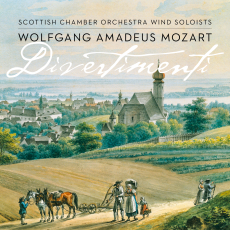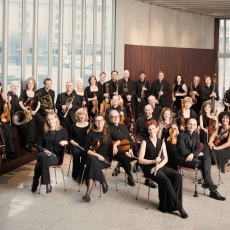SCO Winds - Mozart: Divertimenti - Gramophone
Mozart informed his father that he had composed the Serenade K375 ‘rather carefully' to impress Herr von Strack, a Viennese nobleman sporting the splendid title of ‘Gentleman of the Emperor's Bed Chamber'. Whether in its original Sextet incarnation, performed here, or its later Octet version, this is music that both celebrates and, as Mozart surely knew, far transcends the tradition of al fresco Harmoniemusik. If you know the more familiar Octet version, you might regret the loss of the oboes' pungent dissonances near the opening, or of the oboe-clarinet dialogues in the Adagio. But the SCO soloists quickly allay any sense of deprivation. Like all the best ensembles in this music, they strike a nice balance between chamber-musical refinement and rustic earthiness. Natural horns lend a welcome abrasiveness to the tuttis; and the instrument's variegated colours give added piquancy to the horn tune that sails out of the blue near the end of the first movement. Clarinets can be dulcet, as in the tenderly phrased Adagio, yet are not afraid to rasp and bite, to specially vivid effect in the sprightly second Minuet. Tempi are aptly chosen (the opening Allegro properly maestoso), and accompanying figuration lives and breathes, not least in the Adagio, where the horns inject delightful touches of jauntiness into the poetic reverie.
The four Salzburg divertimentos for wind sextet of 1776-77 are far slighter. Yet each reveals the craftsmanship Mozart lavished even on trifles for Archbishop Colloredo's dinner entertainment. The excellent booklet-notes fail to disclose why the Scottish players opt to perform the divertimentos with clarinets rather than the prescribed oboes. Still, while I missed the oboes' pastoral plaintiveness in movements such as the opening siciliano of K252, the sensuous warmth of the clarinets is fair compensation in the mellifluous A flat major Trio, or the Adagio of K253. Again the players balance polish, poetry and sheer bucolic enjoyment. The rare example of a Mozartian polonaise in K252 goes with a jaunty swagger (other performances I've heard are rather more decorous), while the lusty contredanse finales exude an impish glee. I fancy Mozart would have smiled in approval.

